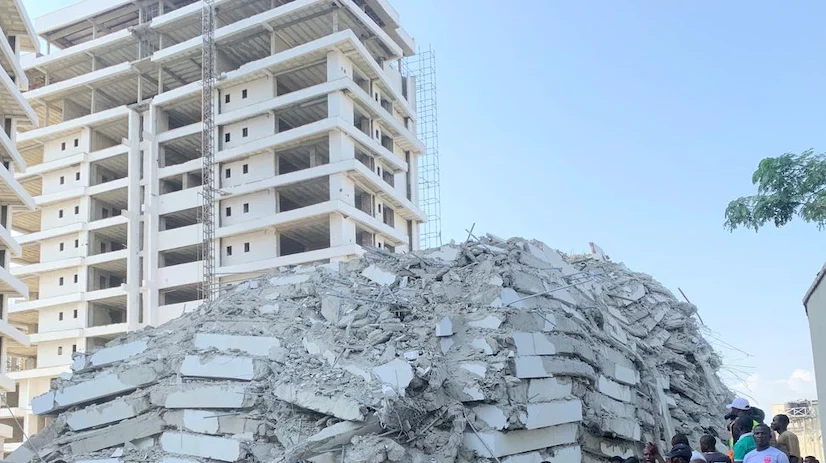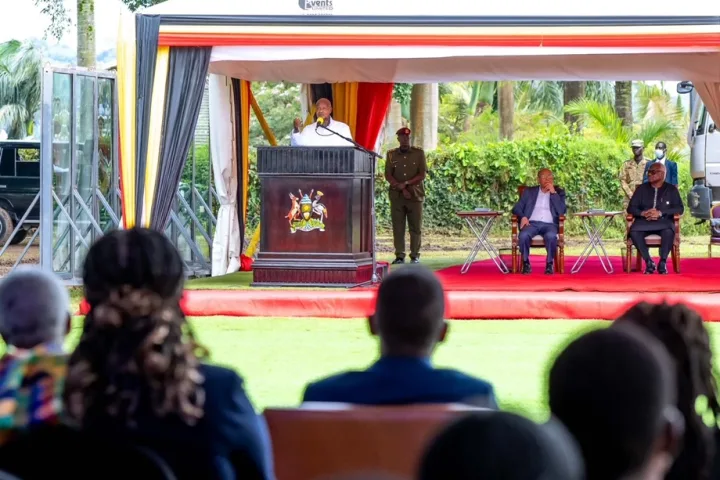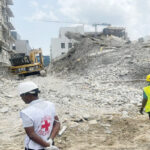NIGERIAN Institution of Structural Engineers (NIStructE) has stated that issues bordering on lack of proper quality control, quality assurance measures and processes during construction were some of the factors observed to have contributed to collapse of the 21-storey building at Ikoyi in Lagos.
The building at 44 Gerrard Road, Ikoyi, which fell on its weight on November 1, 2021, tragically led to death of about 45 people including the developer, Fourscore Homes owner, Femi Osibona.
Join our WhatsApp ChannelNIStructE in its preliminary report released on Monday about the Ikoyi building disaster, signed by the institute’s President, Engr Kehinde Osifala, discovered that the building was originally designed for six floors, but later converted to 12 floors, further later to 15 floors and finally to 21 before its sudden tragic fall.
Osifala stated that their preliminary investigation into cause of the incident revealed that there were more than two structural engineering design firms that worked on the project at different times, and there was also several changes of the design brief about construction of the structure.
NIStructE Predident said, “There are clear indications of several design brief changes on the project and the engineering and management of these changes appear to have been seriously inadequate.
“The building that collapsed was initially designed for just six floors, and later to 12 floors, before this was further changed to 15 floors.
“It could not yet be established the adequacy of any properly designed and documented further revision to the eventual (and tragically, final) 21 floors that was being implemented and which collapsed.
“There are also indications that more than two structural engineering design firms worked on the project at different times,” Osifala stated.
He said their findings also revealed that the poor quality materials were used in the construction, as they observed from materials in the debris at the site, and that the building was already having signs of sructural duress before it went down.
“The preliminary investigation also revealed some evidence of structural inadequacy in the construction and that signs of some structural distress had already started to show within certain elements of the building. Some remedial measures were already being undertaken to address some of this.
“The method of implementation of this was not in accordance with sound structural engineering practices.”
INStructE constituted a team which went and conducted a preliminary investigation on the causes of the building collapse and came out with the findings
It equally advocated further comprehensive investigation about the disaster so that all the factors that caused the problem would be unravelled and appropriate measure be taken to avert future occurence.
“All the above findings, which are very significant from the structural engineering point of view, need to be investigated further during the detailed investigation stage so that all factors related to the cause or causes of the collapse can be truly established and the appropriate lessons identified and implemented.
Osifala explained that the outcome of their preliminary investigation was to “give a general indication of what likely led to the unfortunate incident,” while noting that other professional bodies are coming up with more comprehensive information about the disaster.
He advised that appraisal of other two buildings at the site of the collapsed building be carried out to determine the strength of the buildings and the impact of the collapsed one on them.
“It is imperative that a thorough and comprehensive structural integrity appraisal be carried out on the other two buildings (14 and 15 storeys Respectively) on the same site,” Osifala advised.
He further advised that competent professionals should be engaged by developers and owners of properties to conduct structural integrity appraisals of buildings and determine their sustainability.
He observed that following the collapse, there was a surge in the request for structural integrity appraisal by property owners and occupiers, and warned that such appraisal should be done by qualified registered structural engineers who have special knowledge and experience in that regard, adding that only when such is carried out that the status of a building is confirmed.
Victor Ezeja is a passionate journalist with six years of experience writing on economy, politics and energy. He holds a Masters degree in Mass Communication.



















Follow Us